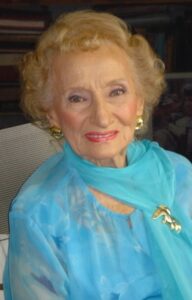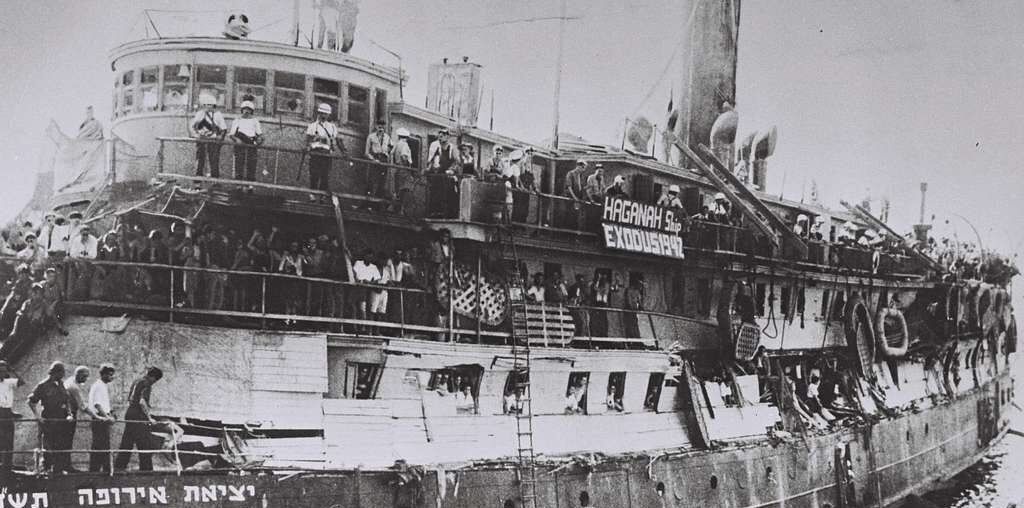In 2019, my husband Larry and I were browsing the shelves of Book Passages, an independent bookstore in San Francisco’s Ferry Building. Larry held up a book he had found in the history section: Haven–The Dramatic Story of 1,000 World War II Refugees and How They Came to America.
“Do you remember the exhibit at the New York State Museum regarding the only Jewish refugees brought to the United States during World War II?” he asked me.
“Yes,” I said. My mind flashed back to walking through the Albany museum’s exhibit with its pictures, displays, and sign boards depicting a group of refugees who were housed in Fort Ontario (Oswego, NY).
“This book is a first-hand account by the woman responsible for getting the refugees to the United States—Ruth Gruber,” he explained on his way to pay for the book.
Six years and much reading later, Larry and I agree: Ruth Gruber–American journalist, photographer, writer, humanitarian, and United States government official, is one of the most interesting people who ever lived.

Ruth Gruber was born in 1911 in Brooklyn, New York, the fourth of five children of Russian-Jewish immigrants. A brilliant student, Ruth graduated high school at 15. After earning an undergraduate degree from New York University at 18, she won a fellowship at the University of Wisconsin, where she obtained a Masters degree in German and English literature. She subsequently received her doctorate from the University of Cologne in Germany at 21, making her the youngest person in the world, at the time, with a doctorate.
After returning to the United States, Ruth became a correspondent for the New York Herald. The only reporter in the world to be allowed to travel across the Soviet Arctic, she saw firsthand how people lived there and witnessed the Siberian Gulag. During World War II she worked for the Department of the Interior where, as Special Assistant to U.S. Secretary Harold L. Ickes, she became its field representative in Alaska.
In June, 1944, she was to undertake “the most important assignment” of her life. Reading the Washington Post at breakfast, Ruth learned that President Franklin D. Roosevelt had signed an executive order allowing 1,000 refugees, mostly Jews, to be admitted to the United States. After years of the country’s refusal to allow Jews to escape the Nazi horrors of World War II, Ruth rejoiced that something was finally being done. She rushed into Ickles’ office to express her concern for their wellbeing. “Mr. Secretary, these refugees are going to be terrified — traumatized,” Ruth recalled in a 2010 interview in the Sunday Telegraph of London. “Someone needs to fly over and hold their hand.”
“You’re right,” Ickes responded. “I’m going to send you.” The fact that she was young, Jewish, and could speak both German and Yiddish made her the ideal candidate.
After flying to Italy, Ruth boarded the Army troop transport, the USNS Henry Gibbins, and soon greeted the crush of people who surrounded her. “I would like… to know who you are, what kind of people you are. What you’ve gone through to survive,” she recounted in Haven. “You are the living witnesses.”
Throughout the two-week Atlantic crossing, Ruth proved to be a calming, empathetic listener and a communicator and advocate for the refugees, who came from 18 countries. She intervened in disputes, taught English, cared for the seasick, and comforted the refugees, some who had miraculously escaped the Nazi’s wrath and others who had spent time in concentration camps.
During the voyage, “Mother Ruth,” as she was affectionately called, became a witness herself, listening to and writing down many of the refugees’ stories. “Get all the terror,” said Dr. Henry Macliach, a doctor from Yugoslavia. “We lived it. We will live with it for the rest of our lives. But you are the first one we can tell it to. Yes, write it down so the world will know.”
On August 3, 1944, the ship arrived safely in New York City, and Ruth accompanied the refugees to Oswego. Initially, the sight of the cold, desolate fort surrounded by barbed wire brought back memories and fears of what many had faced in Europe. Through Ruth’s guidance and the support of many others, including the residents of Oswego, government officials, and even Eleanor Roosevelt, the place became a haven from the ravages of war. “Thus I became a witness and participant,” Ruth wrote. “I experienced their joys and pain, rejoicing in their marriages and love affairs, sharing pride in their children, mourning those who died by their own hand or by acts of God.”
FDR’s initial Executive Order stated that the refugees were “guests” of the United States under the condition that they must return to their origin countries after the war. In late 1945, the U.S. government changed its mind. All who wished to stay remained. The final chapter of Haven lists the successes of the new citizens, who established careers in many fields of employment, medicine, technology, education, law, business and the arts.
Ruth was profoundly impacted by her participation in the refugees’ “journey out of despair and death, to hope and life and light.” Although she was born a Jew, she became a Jew. “I knew my life would forever be inextricably interlocked with Jews,” she wrote in Haven.
The rest of her life was a testament to that commitment. After World War II, she witnessed the scene at the Port of Haifa where Jewish refugees on board the ship Exodus were not allowed to enter Palestine. She then followed them on their way to France and Germany. While onboard a ship off the coast of France, the refugees conducted a hunger strike. The only reporter in the world allowed on the ship to report firsthand on the unfolding story was Ruth Gruber. Her book, Exodus, became the basis for the 1960 film. She later covered Israel’s War of Independence, became close friends with David Ben-Gurion, and conducted the first in-person interview with him when he became Israel’s first president.
In 1951, Ruth married. She gave birth to two children and continued her journalistic endeavors. In 1985, at the age of 74, she visited Jewish villages in Ethiopia and chronicled the rescue of the Ethiopian Jews to Israel. Throughout her life, she chronicled her adventures through her award-winning photography, articles, and eighteen books. Ruth Gruber died at the age of 105 on November 17, 2016.
“Her empathetic coverage, she often said, was rooted in her pride as a Jew and as a journalist with a mission,” her New York Times obituary stated. “I had two tools to fight injustice — words and images, my typewriter and my camera,” she was quoted in the NYT obit. “I just felt that I had to fight evil, and I’ve felt like that since I was 20 years old. And I’ve never been an observer. I have to live a story to write it.”
A typewriter. A camera. Empathy. With my iPhone camera nearby, I click away on my computer keyboard, hoping each of my stories displays the same empathy Ruth Gruber demonstrated throughout her life. She is not only the most interesting person I’ve ever encountered. Ruth is my hero and my role model. I’m so grateful to have learned her story.
Written for the book Never Forget: Stories of Jewish Sacrifice, Survival, and Strength, by Marilyn Shapiro, due to be released September 2025.


3 Comments
Susan, this is a little late, but thank you for the comments about my Ruth Gruber story. She IS an amazing woman and my hero!
Loved this information about this amazing woman! And she was the story for the movie Exodus, the film that taught me about the birth of Israel when I was a young teen.
This was an amazing article about an amazing woman! It was stirring to learn Ruth’s story and how many lives she positively impacted.